An Iconic British Aircraft, the BN-2 Islander
Introduction
We – Andy Clarke and Angelique van Campen – from X-Plained.Com are pleased to offer you an in-depth review of the Nimbus Britten-Norman BN-2B Islander. The modeled version by the Nimbus team is representing the old fashioned cockpit lay-out. I mention that on purpose since the Islander is still build although these days it’s equipped with modern Display Units.
Although your personal reporter Angelique van Campen didn’t work in her years as ground engineer on the Islander, it was a famous and often seen aircraft. The later model, the Trislander, was a bit weird. Such a small aircraft with a third engine with propellor mounted in the vertical forward fin/stabiliser.
Competitive aircraft models for the Islander are for example the Cessna 208, Cessna 402, Doernier Do 28, Piper PA-31 Navajo and the Tecnam P2012 Traveller. Keeping in mind the age of the Britten-Normal model, it surprises me that Britten-Normal still exist. Oh yes, besides many improvements like a cockpit update with modern DUs (Display Units), the Islander and its military version the Defender, are still build.
When you search the Internet, you’ll be surprised how many simulator developers made this Islander for Microsoft Flight Simulator, P3D and also for X-Plane. As of this writing – July 2020 – we have now 2 Islander X-Plane 11 models available. One is from Nimbus Simulation Studios and the other from Torquesim, both modeling the Islander BN-2B. We’ve chosen for the Nimbus Islander.
That said, lets first check out this old fashioned aircraft although the latest models have brand new digital displays. The modeled Nimbus Islander comes with old fashioned instruments although the Garmin GNS 530 was never installed in the original aircraft but at a certain moment/time it had to be equipped with a GNS 430 or 530. But before we – Angelique van Camp en and Andy Clarke – start with our own experience, let me check what kind of aircraft the Islander was.
Britten-Norman Background
According to the official Britten-Norman Islander website and Wikipedia “The Britten-Norman BN-2 Islander is a British light utility aircraft and regional airliner designed and originally manufactured by Britten-Norman of the United Kingdom. Still in production, the Islander is one of the best-selling commercial aircraft types produced in Europe. Although designed in the 1960s, over 750 are still in service with commercial operators around the world. The aircraft is also used by the British Army and police forces in the United Kingdom and is a light transport with over 30 military aviation operators around the world.”
“Initial aircraft were manufactured at Britten-Norman’s factory in Bembridge, Isle of Wight, UK. After Fairey Aviation acquired the Britten-Norman company, its Islanders and Trislander aircraft were built in Romania, then shipped to Avions Fairey in Belgium for finishing before being flown to the UK for flight certification. The Islander has been in production for more than 50 years.”
“In 1953, Britten-Norman was formed for the purpose of converting and operating agricultural aircraft, amongst other vehicles such as the Cushioncraft hovercraft. In 1963, the firm initiated development work upon what would become the Islander, having sensed a demand for a simple and inexpensive twin-piston engine aircraft. The founders, John Britten and Desmond Norman, had observed the rapid growth of the commuter airline sector, and concluded that capacity was of a higher value to these operators than either range or cruising speed, thus the Islander emphasised payload over either of these attributes.”
“On 13 June 1965, the first prototype BN-2 Islander conducted its maiden flight, powered by a pair of Rolls-Royce/Continental IO-360B piston engines; only four days later, the prototype appeared at the Paris Air Show.”
“In 1969, an improved version, the BN-2A Islander, conducted its maiden flight. It incorporated aerodynamic and flight equipment improvements, such as lower-drag engine cowlings and undercarriage, an improved interior, and an expanded rear baggage area with external access. In 1970, to improve hot-and-high performance, more powerful Lycoming O-540-K1-B5 engines were made available, alongside optional tiptanks and an elongated nose to house baggage.”
“In 1978, a further improved version, the BN-2B Islander II, was produced as a result of a product improvement program. The BN-2B model involved several changes, including a redesigned cockpit and a reduction in cabin noise levels. In 1980, it was decided to make available turboprop engines for the type, adopting twin Allison 250-B17C engines; when the latter are installed, the aircraft is designated the BN-2T Turbine Islander. The first such BN-2T entered service in 1981.”
“When equipped with four 54-gallon fuel tanks, the Islander was able to ferry itself across the transatlantic route, via Gander International Airport, Newfoundland, for US deliveries. The Islander’s long-range capabilities were highlighted when the type won the 1969 London-Sydney air race.”
Current Britten-Norman Factory
With no doubt Britten-Norman is still alive. It’s still producing Islanders. It is producing new Islanders, Defenders which are actually military versions and it sells pre-owned Islanders. All Islanders come with advanced cockpit technology like standard equipped with Garmin G600 series & GTN “Glass Cockpit” or optional you can get Garmin GWX weather radar, Garmin radar altimeter, Garmin electronic instrument display or the Genesys system 55X Autopilot
Not satisfied with a default passenger interior? Everything is possible with Britten-Norman like having a special mission configuration or perhaps you like the executive interior more. But there’s more, being an air ambulance like the Scottish Air Ambulance had or just having a freighter cabin. Curious about what the current Britten-Norman factory offers besides the Nimbus Islander? Check out the Britten-Norman website.
What’s next … Manuals and Installation
The Manual
The package comes with one Acrobat manual named manual. The Nimbus Islander manual is only 16 pages and although it covers a couple of things, there’s no tutorial or sample flight. There’s also no step-by-step procedure how to start the engines. On the other hand, the aircraft comes with a build in checklist. Not an interactive checklist, but just a digital checklist. I spotted already at the X-Plane.Org a clist checklist file which is good news.
That said, the manual tells/explains a bit about the activation, the popup windows or also known as the Quick Access menus situated on the left-hand side of the X-Plane screen. I only hope that, like you can/have with Thranda and Carenado/Alabeo aircraft, you can let the quick access disappear and re-appear. Not really an issue, but just a thought or request.
Further on, all panels are explained a bit or identified what what is. I have to be honest that finding a flight manual or maintenance manual for free was very difficult but I found two of them. The maintenance manual was unfortunately only for the flight controls but neither less, very interesting to read that the flight controls – aileron, rudder and elevator – have no hydraulic backup or powered flight controls. In other words, it’s all mechanical linked from the cockpit controls to the flight controls itself. Just in case, the Islander has no trimmable horizontal stabiliser.
The aileron has besides mechanical linkage to move the ailerons a balance tab but no trim. The rudder and elevators are again mechanically via linkages, rods and cables controlling the respective flight controls while both have a trim tab and thus trimming options for yaw and pitch. It’s just like the old fashioned Cessna 172, 182 and so on.
The Package
To install the package you need a serial number which is provided via X-Plane.Org once bought. The package consist of the aircraft without a “livery folder” but I need to add immediately that via the X-Plane.Org Nimbus Islander URL you have also access to a liveries folder. In both cases, unzip the packages and put the livery folder in the aircraft root folder, and install the aircraft in the X-Plane Aircraft folder. Either directly or you create first a sub-folder “Nimbus”. Up to you!
I spotted a couple of user liveries for this extraordinary aircraft, but would like to see more. For example, I’ve seen a current factory livery but I haven’t seen a old factory livery from the ’60. I didn’t check all the liveries versus how real and accurately they are painted. For my test flight I will use the Scottish Air Ambulance and for sure this “yellow-green” isn’t really correct. It should actually be yellow, same as the helicopters of the Scottish Air Ambulance and the spinner cones should be straight yellow and not a yellow with a metalic glossy look. Anyway, that’s just a detail.
Andy will continue from here while I make my scenic ambulance flight from EGPB Sumburgh, modeled by Orbx. Just for those who have no idea where it is located; “Sumburgh is a small settlement at the Shetland Islands, Scotland. Sumburgh is located at the south end of the Mainland on Sumburgh Head.” See you later!
Exterior Modelling
I must mention I have never seen an Islander in real life nor am I a qualified pilot. I use X-Plane as a recreational product and my comments in the review attempt to cover things that I would be interested in when buying a model. On starting the model I found that the activation box appeared but the paste procedure to enter the activation key did not work. I was able to enter the key manually and the model activated correctly.
This was not really a problem but I mention it as a solution should any one face a similar issue. I loaded the aircraft on the ramp and used the on screen menu to add chocks, pitot cover and engine covers. I approached the aircraft from the front left. The aircraft is sharp and the colours vivid with a large amount of detail visible. The aircraft is weathered to an appropriate level to provide realism and equipment is presented with a high attention to detail.
Moving towards the front of the aircraft the weathering and panel work becomes more apparent showing all the modelled joints and rivets. The propellor bosses show reflections and the makers marks are on the propellor blades. Light and shade work well with the model and again add to the realism. Looking through the windscreen the crew and passengers can be seen to be modelled and all moving independently.
Moving to the front right I adjusted the X-Plane view position to look down on the aircraft. This showed the detailed panelling and wear modelling on the upper surfaces of the model and also showed how light and shadow worked well with the appearance of the aircraft. Back to ground level I used the doors and accessories window to open the doors this happened smoothly and realistically.
The glass effects change with the angle of doors and windows. Moving further round towards the wing tip gave wider views of control surfaces, engine cowlings and undercarriage. All are modelled to a high standard with strut and tyre detail and realistic catches on the engine covers.
Raising the camera allows a view down onto the wing surface and shows panelling and rivet detail and also the overall shape and character of the aircraft. Moving to the rear right quarter creates a view of the right doors and tail area showing the weathering on the model surface and demonstrating how the model sits on its undercarriage.
Taking a closer view from this angle shows the engine exhaust detail, including marks on the painted surfaces and also the detail on both the main right undercarriage and nose wheel. This is all created to a high standard of colour, detail and realism. The glass reflections are also demonstrated here along with further views of passengers inside the aircraft.
A high view from the rear of the aircraft shows panel and control surface detail and illustrates the shadow and light work well with the model and this is further demonstrated with a ground level view of the model with open doors showing their inner detail is still visible when viewed externally. Viewing from the rear left allows the user to see the left side doors open and also the level of detail across the whole model. Viewed from any direction the aircraft is consistently created to a high standard.
When viewed from the left hand side with the doors open further detail is evident both inside and outside the aircraft. Cabin seating is fully modelled and the open doors sit realistically alongside the aircraft. The side view also shows wing detail including the raised wing tips. There is a slight issue with the nose wheel hovering just above the ground when the aircraft is static but this should be fairly straight forward to correct in future versions and is only a minor detail and does not detract from the overall model. The view from the left wing tip displays the textures for the model and also allows a preliminary view of the detail inside the cockpit.
In the air the model continues to look very good and the livery appears crisp and clear. Propellor movement is captured very well and light and reflections are convincing. The pilot and passengers remain visible and the undercarriage maintains its detail. In low light the aircraft remains very good to look at and the detail still stands out.
The model is created to a high standard when viewed from outside and the level of detail remains good across the aircraft. The liveries appear crisp and vivid with signage and lettering all legible and realistic. The model has the correct amount of wear and tear to be convincing and maintain its utilitarian character.
Interior Modelling
Approaching the aircraft at the pilots door the detail of the interior is immediately apparent. Moving inside the dials and instrumentation are clear and crisp and presented to a high standard. There are numerous bright, vivid colours throughout the cockpit and cabin bringing it to life. The menus to left of the screen allow doors to be opened and also changes to the number of passengers.
The figures within the model are modelled individually and move independently. They are realistic and some look more nervous than others! Textures are varied and appropriate and all materials and fabrics look very realistic. The overhead panels are of a similar high standard and the sun-blinds can be operated to move in front of the pilot and copilot.
The cockpit and cabin lighting can be easily controlled and adjusted and the interior looks very impressive in low light.
Moving back through the cabin the detail continues with air vents and lights modelled and the passenger seats and equipment containing a large amount of detail including a set of head phones for each passenger. There is a luggage area behind the rear seats and this can be accessed via the luggage door. Views from outside confirm the interior detail.
The cockpit shows a good level of wear and tear appropriate to the age and type of aircraft including scuffing of the pedals and removal of colour on the floor where the pilot and co-pilots feet are positioned. The glass of the cockpit also has some ageing which adds to the realism and light, shadow and reflections work well within the aircraft. Views out of the windows are clear and bright. The control yokes can be toggled as visible or hidden.
The interior of the model compliments the detail of the outside. The fine detail throughout adds realism and the colours, textures and ageing add real character to the model and makes the use of the aircraft an immersive experience. Controls and instrumentation are modelled to a high level creating interest for users of any level of experience.
Sound
The engine sounds very convincing even at idle with different background noise when the throttles are this low. One of the best ways to experience the different sounds of the aircraft is to start from cold and dark. As the aircraft “wakes up” the electrical hum when the battery is switched on is very realistic and this is supported by the noise made by the auxiliary fuel pumps.
The sounds of the flaps moving gives a reassuring confirmation that the function is taking place. In flight there are good deep sounds from the engines which respond very well to changes of throttle, rpm and mixture settings. The warning sounds are strident and cannot be missed! Switches and controls have their own sounds although there are no sounds accompanying the doors open and close. The sound package is very realistic and adds further character to the visual modelling of the aircraft.
Systems
The developers provide their own system to help the user operate the aircraft. The Quick Access on screen menu appears to the left of the screen and allows the user to monitor maintenance levels and carry out repairs, see the position of yoke and throttles, check performance data, monitor and change weight and balance and passenger numbers and operate doors and accessories. All of these functions are explained in manual.
The maintenance tab in the Quick Access menu introduces servicing of the aircraft to ensure reliability. The menu can be set to keep the aircraft “Always Like New” and therefore avoid having to consider the various maintenance aspects otherwise various components will degrade if not monitored. These include alternators, filters. oil and engine components for both engines and tyres and brake pads for the undercarriage. All of these functions have green tabs attached to them showing the percentage wear and clicking on the tab restores them.
The controls position option produces a small icon on the screen showing the position of the joystick and throttles. This is a useful quick reference when the camera view is elsewhere.
The next option displays performance charts covering power settings, fuel use and landing and take off speeds. The charts are easily legible and appear quickly when the tab is used. They may look a little daunting to inexperienced users but they are clearly explained in the manual and I picked them up quite quickly.
The weights and balance tab allows the user to vary cargo, fuel and passenger weights and positions. This controls the centre of gravity which is visibly represented on a chart and the passengers, crew, cargo and fuel levels and displacement are shown in a picture of the model. This allows the user to fly the aircraft in various configurations, varying the flight experience.
The doors and accessories option allows the aircraft doors to be opened and closed, and engine covers, wheel chocks, pitot cover and rudder control lock to be toggled, again giving more variation and realism to the model. I found that engine covers could only be managed when the aircraft was on the ramp with engines off.
This makes sense, and is mentioned in the manual, but if the last setting was for the covers to be on and the aircraft is then loaded with engines on or on an approach the engine covers still appear and cannot be removed until the aircraft is loaded on the ground with engines off. The fact the covers are there does not affect the flight but it clearly does not look correct. In fact this is quite realistic in the sense the pilot has to remember to remove the covers at the correct time otherwise they will create problems. Likewise if the last time the aircraft was loaded it was set with engines off it will load with them off for a runway approach and that becomes challenging too!
One item that is not mentioned in the manual is another tab in the menu that gives access to the various checklists applicable to the aircraft. These cover preflight, pre start, start, after start, pre take off, after take off, pre landing and after landing and are very useful for using the model but especially when starting from cold and dark. The lists are modelled as if in a handbook and each separate check list is opened by tabs on the side. Some lists run over several tabs but all are straight forward to open.
The aircraft is equipped with a GNS 530 designed to resemble the Garmin 530 navigation and communication system. A handbook on its use is available on line through X-Plane. The cockpit equipment also includes an audio panel, radio stack, ADF unit a transponder and an autopilot. The auto pilot is also explained in the model manual.
The model is equipped with several systems to enhance the experience for the user and add some additional realism to the functions of the aircraft. In addition there is a good array of flight systems to assist with navigation and other aspects of flight.
Basic Flight Experience
I initially flew the model with little reference to the manual or checklists. I loaded the aircraft at the end of the runway, added flaps, took off the brakes and applied throttle. I soon learned how quickly the Islander wants to be in the air and then how surprisingly responsive it is once there.
The dials and instruments are clear and easy to read in flight making the process easier. I took a little while to stop over controlling the aircraft as it responds to gentle inputs of the yoke and throttle. I completed a circuit and returned to make a successful landing. The aircraft is stable and easy to fly at low speeds making the landing process less of a challenge. Visibility is good and the aircraft is fun to fly, whilst looking good in the air.
I then started a flight on the ramp and cold and dark to work through the checklists provided in the on screen menu.
Following the pre-flight checklist I ensured the magneto switches on the overhead panel were switched to off and the parking brake was on. I followed the cabin checks ensuring critical lights and heaters were working and set correctly and then switched off the battery master switch. Having completed an external check of the aircraft I moved on to the pre-start internal checks.
These checks involve testing controls and instruments, setting cabin temperature, ensuring electrical power is set correctly, ensuring the radio is off and setting throttles, propellor controls and mixture.
The next checklist covers the engine start procedure. I set the fuel tank selectors and switched on the auxiliary fuel pumps. I primed the starboard engine by moving the star board throttle to the open position and back to closed twice and then left the throttle one tenth open. I switched both of the right magneto switches to on, although the checklist says left, and then moved the starter switch towards the starboard engine. Nothing happened. I tried the port engine with the same result.
After some help from Angelique I completed the process again only this time I only used the right hand, No2 magneto switch for each engine. Both started immediately and responded well to throttle inputs. I only mention my mistake to help others avoid doing the same thing. I did carry out the after starting checklist before commencing the pre take off list.
This list does appear to have a couple of errors in it as it states I should set the doors to Full fine (Max RPM) but I did make sense of it and set the propellor pitch and mixture correctly. I set the trim and flaps as required although again the check adjacent to flaps appeared to relate to fuel. I entered a flight plan into FMS, set the heading bug to the first required heading and then I was then ready to taxi for take off.
Taxiing was very straight forward with the aircraft light and easy to steer and good visibility. I stopped at the threshold of the runway for final checks.
I entered the runway and applied throttle. The aircraft was smooth and responsive and wanted to leave the ground quickly. At 200ft I raised the flaps. I climbed to an appropriate altitude and I followed the after take off checklist. I set engine revs and manifold pressure and set the mixture appropriately. I switched off the auxiliary fuel pumps and made settings for cabin heat and carburettor heat. I switched on the auto pilot and set it to heading and then Nav as well as altitude lock. The aircraft responded well and followed the autopilot smoothly. I enjoyed the flight and the good visibility from the aircraft.
I then did the pre landing checks as I approached my destination ensuring the correct engine and propellor settings, I switched off the autopilot and then made a visual approach. I found the approach speed was straight forward to control and I made a successful landing. I taxied to the stand and completed the after landing checks and shut down the aircraft.
This was a really interesting and enjoyable trip. The cockpit and instrumentation is easy to learn and everything responds as described. The model works well with the autopilot and all functions and services work well together. A fun aircraft to fly whether on a jump in and fly basis or when following the correct procedures.
Scenic Flight Sumburgh (EGPB) – Inverness (EGPE)
Intro
From your personal reporter Angelique. For her scenic flight she jumped a board the BN-2B from Scottish Air Ambulance and used Orbx sceneries for the Shetland Island, Orkneys and northern England. Since it’s an IFR flight, I created with Little NavMap (LNM) from Alex my flight plan. This is one of the many offline packages which is free by the way, that allows you to create any flight you want. Besides that, it can also link with the LNM plugin to X-Plane. Then the LNM map is used to check your current position. When you have two monitors connected to X-Plane, you can move the map to the 2nd display. Suppose you’re using macOS, then with Catalina you can use your iPad Pro for this with the build in function SideCar.
Anyway, the flight is approximately 200NM which is far within the range the Islander can fly. Of course, it all depends on the environmental conditions, your aircraft weight, engine settings, cruising altitude, and so on.
As mentioned by Andy and myself, the Nimbus Islander comes with a checklist, but it’s perhaps also worth to check out the clist file version 1.2 from X-Plane.Org user GoofyJP. If you want that too or give it a try then surf to URL and download the file. Then you go to this URL and download the Xchecklist plugin version 1.41. Follow the instructions in the manual where to install the Xchecklist plugin. I let you know later how it feels to use the interactive checklist by using plugin Xchecklist.
Preparations
One of the preparations is loading the flight plan in the Garmin GNS530. Since the Islander is using the default fms file format, you drop the flight plan in the Output/FMS Plans folder and you’re ready. The only thing you need to keep in mind is that you have the latest AIRAC. As of this writing that’s AIRAC cycle 2008. The plan is to fly at an altitude of 8000 feet and together with the weight and balance and the performance chart I can figure out my TAS (True Air Speed), manifold pressure and fuel consumption. The other chart is used are to figure out our takeoff speeds. Check the aircraft weight versus the aircraft speed. An example is given in the included manual.
Regarding the weight and balance, we have the possibility to set the right amount of fuel, cargo and the amount of passengers. For the amount of passengers, just click “a” seat. All together this will lead to the correct center of grafity and if the CG is within or outside the CG Moment Envelope. Difficult? Not at all. It’s fun to play around which or what you want. In this interactive graph you also have the option to show/hide passengers and the pilot. Ok, a missing pilot isn’t a good idea although sometimes pilot objects are obstructing your view on the instruments.
Scenery preprations
Not directly a section related to the Nimbus Islander, but worth to bring this to you attention. As I highlighted before, for my departure airport I’m not only used Orbx EGPB Sumburgh, but I also added Orbx TrueEarth GB North. You can do it of course without it, but in one of my North England explorations I was impressed what TrueEarth GB North can do for you but besides that, default Sumburgh is included in the default X-Plane package with 3D objects included and I also found a user made EGPB. That package goes back to October 2017, so a bit old.
For my arrival at Inverness, I figured out that there’s again in the X-Plane Gateway a 3D version of this airport and also an older user made package. For now, I decided to use the X-Plane Gateway version which is a part of the default X-Plane pack.
The Flight
It is a bit tricky using real weather, but during my todays flight the weather at EGPB is pretty nice as well as the forecast for northern Scotland. A few clouds and a lot of wind, but I think I can handle that. I sincerely hope the Islander can handle that too! I’ve parked the SAA (Scottish Air Ambulance) Islander at spot 25 and keeping the wind in mind, the takeoff will be from runway 33.
Lets go. Starting X-Plane with a cold and dark Islander at spot 25. As I mentioned before, Andy covers the build in Nimbus Islander checklist while I’m using the interactive clist in combination with the Xchecklist plugin. So once my Islander is loaded, I start with the checklist from the beginning and try to follow all the steps that are needed. What said, it’s an interactive checklist which means that it can detect switch or knob positions and when you need to set for example the MIXTURE or THROTTLES to a certain position, it detects if a lever is in the right position. Awesome to be honest. It works flawless with almost all the steps you need to do. There are a few steps where it didn’t detect my actions, but OK. Remember, the clist is not a part of the Nimbus Islander package.
Taxiing to runway 33 isn’t far from spot 25, but I’m not sure if the ground markings on the apron are all correct since it seems to me that I taxi in the wrong way. Anyway, this has nothing to do with the Islander, so before reaching holding point 33, I continue with the checklist which means magneto versus engine RPM checks. A couple of minutes later, I’m rolling on 33 and apply full throttle and at roughly 60-70 knots, I lift the nose gentle to initiate my climb. While making the takeoff, the whole instrument panel is shaking which feels as real as it can. Not that I know how it is in real, but most of the time these aircraft shake around due to the runway condition, the center line and so on. Remember, I did switch OFF the build in X-Plane Cinema Verite, so this simulated shaking is from Nimbus themselves.
By the way, don’t forget to set the HSI source switch to GPS before you takeoff to connect the AP to the flight plan. As far as I know it was also possible to do this via the GNS 530 with the CDI switch that allows you to switch between VLOC and GPS but that seems no longer operative. The AP works a far as I’ve seen so far well but I can’t tell you right now if the modeled AP is an own development of Nimbus or that the default Laminar Research AP is used. To get an answer on this – AP dedicated modeled for the Islander – I contacted Santiago (Nimbus). According to Santiago “under the hood the stock Auto Pilot is what does the work, but we from Nimbus are simulating the behavior and operation of the real build in Century2000 Auto Pilot.
With the AP connected, it goes by default in the HDG HOLD mode although not indicated like that. It just shows “HDG” in orange on the AP panel annunciator. So to connect the AP to the flight plan, you’ve set the HSI source switch already to GPS and additionally you click the NAV button on the AP panel. Logically, the HDG light extinguishes and the NAV illuminates, both on the AP panel annunciator. The aircraft Vertical Speed (V/S) is at engagement reduced to 0 feet/minute. With the DN and UP buttons you can set a certain vertical speed.
Notice the TRIM UP and TRIM DN orange light momentarily illuminating. Once you’ve reached your intended cruising altitude, you click the ALT button which is compared tov modern aircraft the ALT HOLD mode. The Islander levels nicely OFF. Not mentioned anywhere, but rotate the HDG bug on the HSI at regular moments in line with the current track you’re following. Suppose you select HDG, then the current HDG will be the ame as the track you where flying before.
While the Islander is climbing out to my cruising altitude of 8000 feet, I have some time to look a bit closer to the modeled instrument panel and the weathering level or in clear English .. how real and old and used is the 3D cockpit modeled?
Angelique’s 3D Cockpit Impression
Her overall impression of the individual instruments is that they are well modeled with eye for all those tiny details like scratches on the indicator glass. Some have a bit more then others, but it looks good although an indicator glass with so many scratches on it, would never be left installed but would have been replaced immediately. The idea is great but a bit too much scratches! I do spot also a lot of places where the paint is gone in a way what we say this is a weathered look. Well done. Further on it should be noted that the circuit breakers located on the right-hand instrument panel aren’t simulated. Most aircraft developers don’t have this, but there are a few who have incorporated this function too.
On the other hand, some instruments are hardly weathered or do look a bit less realistic like the AP control panel. It clearly looks as brand new. Ok, it’s possible that it has just been replaced by a new one, but it comes with no used or weathered look. Compared to all the instruments it’s to be honest a bit odd to see. At the Aluminium instrument panel I see at several places some scratches. Normally the paint or primer behind the finishing colour is a kind of green-yellow which is also the case with these scratches.
Oops, I found a small issue .. missing wall!
Below the switching panel and the area with the rudder/brake pedals, there’s missing something. I have a direct external view. A wall is missing! This is on both sides of the center pedestal underneath the mian instrument panel. But more important to informed you that Nimbus wil lcorrect this with version 1.1.
Important or not that’s a matter of taste, but the green sun visors aren’t movable. At least, I wasn’t able to turn them down/up. And other thing I noticed and not really an issue, but just bringing to your attention; you know that for clarity reasons it’s handy when you can disappear the control wheels. That’s also with the Nimbus Islander, but when you click on one control wheel, both disappear or reappear. I had hoped that you could do this separately from each other. Perhaps with a future updated it will also be possible to vanish the Nimbus Islander icons on the left-hand side of the X-Plane screen like we know from other developers.
One last remark which is on the other hand not really an issue but when I look to the Whiskey compass and the Outside Temperature Indicator I’m a bit surprised that for the temperature indicator not so many polygons are used. It doesn’t look nice while all other instruments have nice round shapes.
That the Islander was and still is vibrating during flight makes sense. This is clearly visible in the 3D cockpit. Most parts are shaking like the sun visors. I had the default X-Plane – View – Cinema Verite OFF, and still the cockpit is even in cruise a bit shaking. Perfectly but what I don’t understand is when I look outside to the aircraft while at cruising altitude, the whole tail – vertical and horizontal fin – is shaking while the rest of the aircraft is steady. I will mention this to Nimbus and either they recognise it or not. Contacted Santiago (Nimbus) and yes, I was not the only person who came up with this “shaking tail”. Santiago agreed with me that it’s perhaps a bit too much shaking and informed me that it will be modified with update version 1.1.
I also spotting that with the FLAPS in the UP position, it seems to me that the FLAPS are not fully retracted. To check this I need to find some real Islander movies and if needed, contact Nimbus. By the way, you can double check if the FLAPS are UP or perhaps in the TO position. On the overhead you find 3 FLAP position lights. If the FLAPS are fully UP, the upper light turns green. Anyway, checked many real Islander movies and although not easy to find one, it seems indeed that when the FLAPS are UP, they hang a bit down. Double checked with Santiago (Nimbus). It turned out indeed as I also saw in several of Youtube movies, that this is normal. The FLAPS are slightly dropped down and are not flush with the wing structure when fully retracted.
Although on my stretch to Inverness there aren’t many VOR/DME beacons, once I’m at cruising altitude I tune for several stations like KIRKWALL (108.60 KWL) and later for WICK (113.60 WIK) and so on. I tune them for VOR 1 and as a result I can see the time to this station, my actual speed and NM to go. The Bendix/King instrument above the Altimeter shows these values. These VOR/DME stations are by the way near or at the Orkney Islands, just located north of the Sottish mainland. When the weather is clear, you can see from Thurso the lowest Orkney Island, “Hoy”.
Some words about the virtual cabin.
The cabin is basically a passenger cabin and can be filled with passengers or not. That’s up to you. You can leave the whole cabin empty or you fill it partly with passengers. It’s well modeled although my interest always goes to the 3D cockpit modeling. Anyway, each passenger seat has its own individual lighting but to check that, you need to switch on the CABIN LIGHTS. All cabin and cockpit windows have some weathering included, some dirt at the edges but you’re not able to remove the window reflection nor that you aren’t able to do the same for the instruments glass reflection. Not that I want it, but for those with a low performance PC or Mac, reflections do cost frame rates.
I’ve just passed John O’Groats, the most northerly and remote place in Scotland. The weather is as I mentioned before, partly cloudy with some places where I have an awesome look down on the mainland of Scotland. At this moment I’m 43NM away from Inverness. I tuned for VOR/DME INVERNESS (109.20 INS) and although I could fly shorter, I’ve decided to follow the coastline.
Via the north of Inverness I approach runway 05 EGPE. Descending will be done with the AP engaged. Simple select the DN button on the AP control panel which disconnects the ALT mode and while monitoring the V/S DOWN value on the IVSI, I set a V/S of approximately 700-900 feet/minute. I decide to make a manual landing although the Islander is equipped with ILS landing capabilities. Flying the Islander manually isn’t difficult. I had set my hardware controls for PITCH and ROLL trim, but hold on, I wrote before that the modeled Nimbus Islander isn’t equipped with a ROLL trim, right? Correct, the Islander is only equipped with PITCH and YAW trim so will it then respond to ROLL trim. Answer is short; yes it will as long as you’ve assigned it
That said, I can trim the Islander during my approach and landing by trimming in case needed. I see already PAPI ahead of me, trying to get two white and two red lights which means I’m on the right glide path. No need to extend my landing gear since it has no movable gear but I need to set the FLAPS to landing configuration. Is the Islander a nervous and difficult aircraft to fly? I highlighted this already before and believe me, it isn’t. You can easy fly it alone as it was and still is done today. How real it is, that’s something that I can’t answer although the real Islander was and I’m sure it still is, flown by one pilot. So it must be an easy aircraft to fly.
Angelique’s Overall Flight Impression
As said before, this review is a combination of Andy’s and Angelique’s overall Nimbus Islander experiences. For Angelique it is quite clear, she loved the Nimbus, she loved the overall modeling although there are a couple of things she hopes they will be solved or fixed with a next update. One of the things you didn’t mention before is that some switches, guards or knobs aren’t working or aren’t modeled. For example the guard left of the PROPELLOR DE-ICING and the PULL for quick ERECT on the standby horizon indicator. The small issues I’ve seen aren’t a disappointment for me. I informed Nimbus Simulations, and hope to receive an answer from them which I will share later with you.
Summary
It’s a long and in-depth review of the Nimbus Islander. I think I can speak from Andy too that we both had a lot of fun reviewing this old fashioned aircraft. Anyway, a few more liveries or user made liveries are absolutely welcome and worth the modeled aircraft. The overall modeling and 3D cockpit is well done with a couple of glitches like the “missing structure” underneath the instrument panel.
The documentation is OK although real Islander lovers would love to see included a POH or perhaps even an AMM (Aircraft Maintenance Manual). The aircraft was released as version 1.0 while it’s already at 1.07 so a big plus for the Nimbus Simulations team. I sincerely hope that if needed, additional updates are released.
Finally, we found a couple of issues that was promised to us by Santiago from Nimbus Simulations to be solved or to be improved with update version 1.1. Anyway, Angelique found some gaps in the 3D cockpit and noticed that during flight the tail of the aircraft is moving a bit too much. Andy on the other hand informed Santiago that when the aircraft is static on the ramp the nose wheel appears to hover just above the ground. Further on, when using the doors and accessories menu Andy found that engine covers could only be managed when the aircraft was on the ramp with engines off.
This makes sense but if the last setting was for the covers to be on and the aircraft is then loaded with engines running or on an approach, the engine covers still appear and cannot be removed until the aircraft is loaded on the ground with engines off. The fact that the engine covers are there does not affect the flight, but it clearly does not look correct. Also if the last time the aircraft was loaded it was set with engines off it will load with them off for a runway approach and that certainly becomes challenging!
All these issues Andy and Angelique found where related to model version 1.07 – which is also where the review is based on while we and all others are waiting for model version 1.1.
Up to Andy ……
This is a detailed model of a utilitarian aircraft of great character. The developers have paid great attention to detail in the visual and audio modelling and this makes for a very realistic experience. There are some minor issues which may be addressed with version updates but this does not take away from the enjoyment of using the model. Flying the Islander is great fun and given its size it is stable, agile and responsive.
The developers have provided systems and processes that allow multiple configurations of the model to give numerous different flight experiences. This makes this aircraft a really enjoyable and interesting model which can be flown “out of the box” up to a fully realistic flight and a challenge for pilots of all levels of experience.
More information about the Nimbus Islander can be found at the dedicated X-Plane.Org store page. As of this writing – end of October 2020 – the Islander cost you 34.95 USD.
Feel free to contact me if you’ve got additional questions related to this impression. You can reach me via email Angelique.van.Campen@gmail.com or to Angelique@X-Plained.com.
With Greetings,
Andy Clarke and Angelique van Campen
| Add-on: | Payware Nimbus BN-2 Islander |
|---|---|
| Publisher | Developer: | X-Plane.Org | Nimbus Simulation Studios |
| Description: | Realistic rendition of the BN-2 Islander |
| Software Source / Size: | Download / Approximately 1.25GB (unzipped) |
| Reviewed by: | Andy Clarke and Angelique van Campen |
| Published: | October 29th 2020 |
| Hardware specifications (Angelique): | - iMac Pro - Intel 3GHz Intel Xeon W / 4.5Ghz - Radeon Pro Vega 64 16368 MB - 64 GB 2666 MHz DDR4 - 1 internal shared 1TB SSD (Big Sur 11.x) - 1 internal shared 1TB SSD (Bootcamp Windows 10) - 1 external 2TB LaCie Rugged Pro SSD (Big Sur 11.x) - Saitek Pro Flight System X-52 Pro and X-56 Rhino - Honeycomb Alpha Flight Controls - Honeycomb Bravo Throttle Quadrant |
| Hardware specifications (Andy): | - Apple iMac - 3.5 GHz Intel Core i5 - AMD Radeon R9 M290X 2048 MB - 16 GB 1600 MHz DDR3 RAM - Logitech Force 3D Pro |
| Software specifications (Angelique): | - macOS Big Sur (10.15.x) - X-Plane 11.5x |
| Software specifications (Andy): | - Catalina (10.15.7) - X-Plane 11.5 (64 Bit) Private Use - A variety of freeware and payware airports |
2 Comments
Submit a Comment
You must be logged in to post a comment.



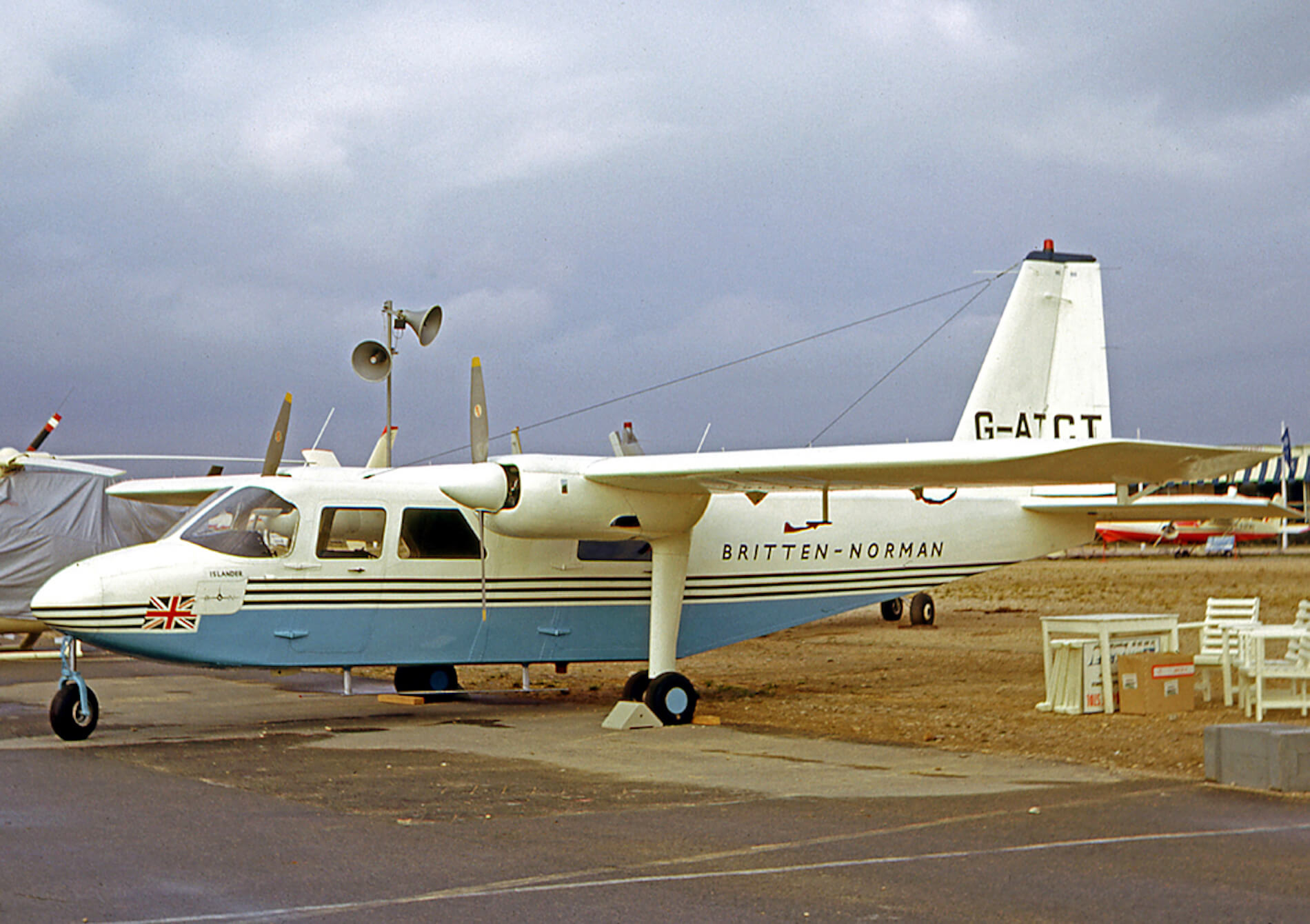

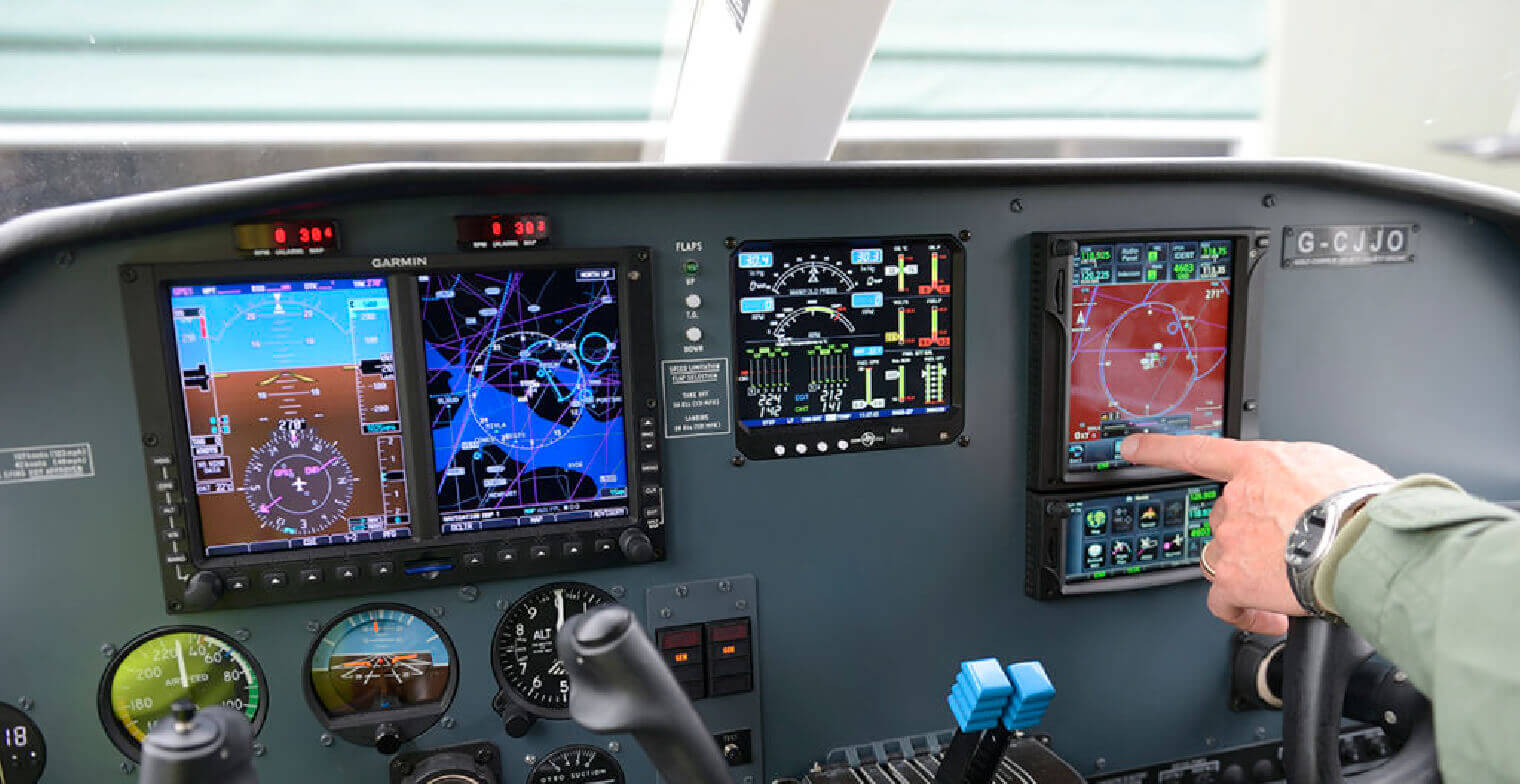









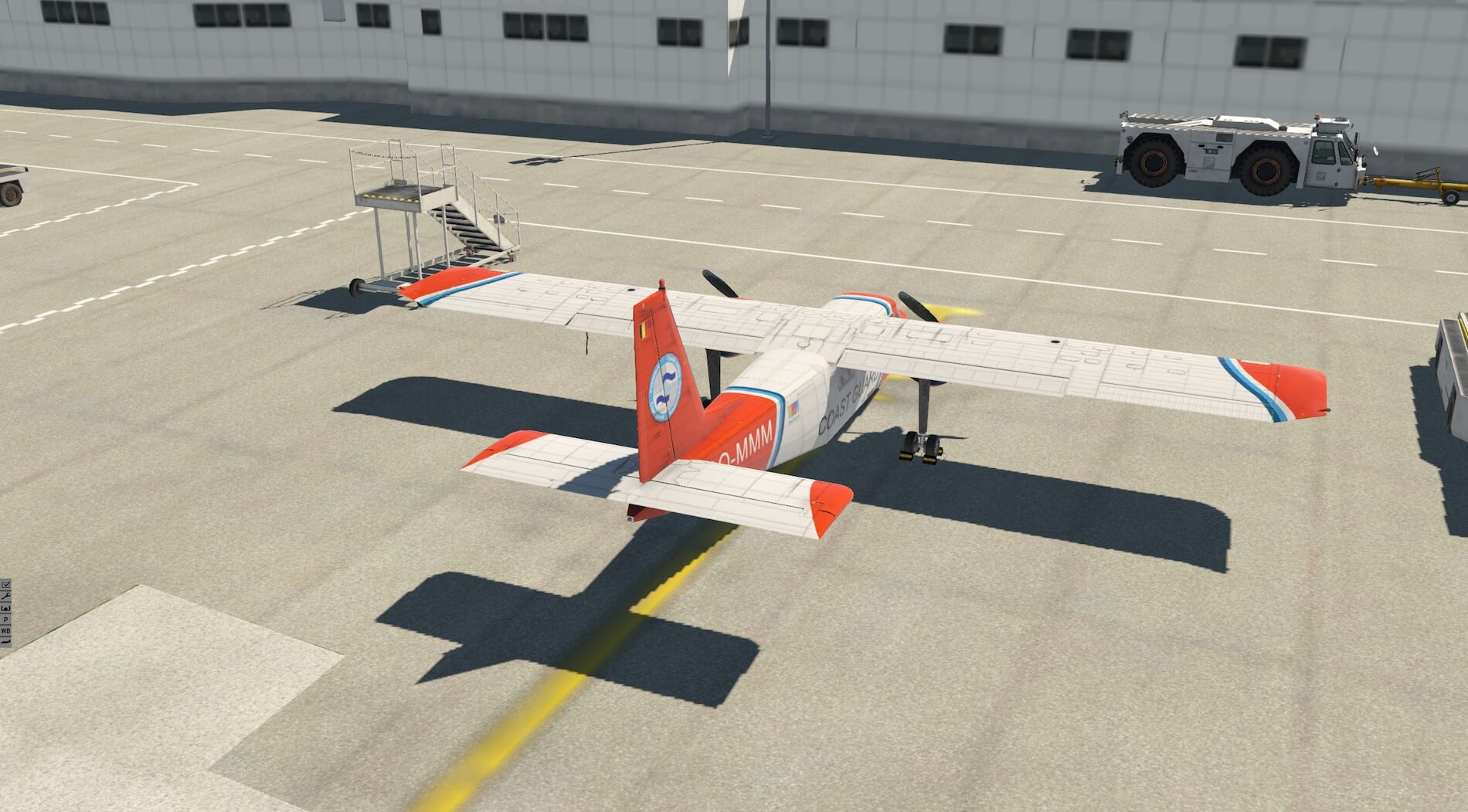

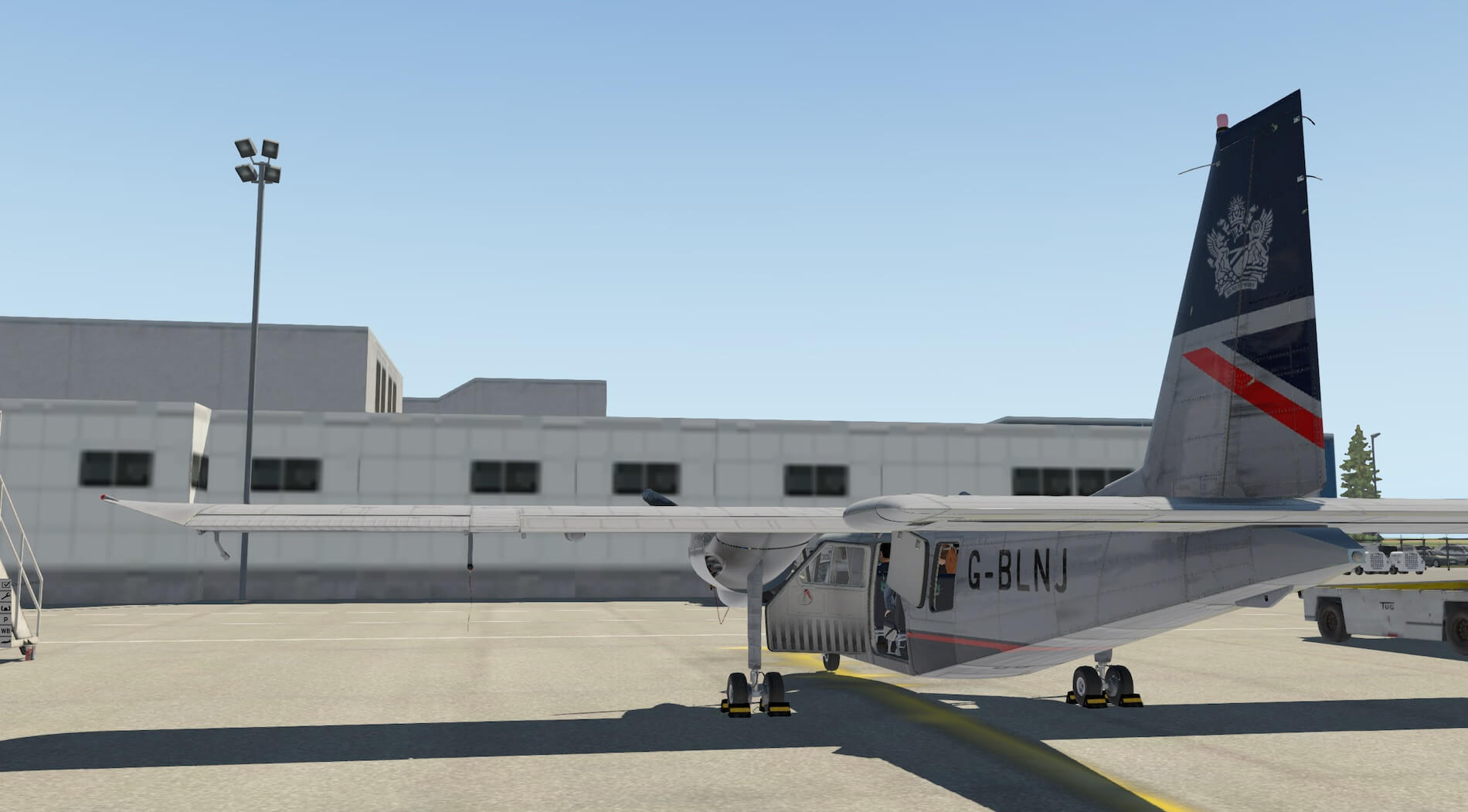
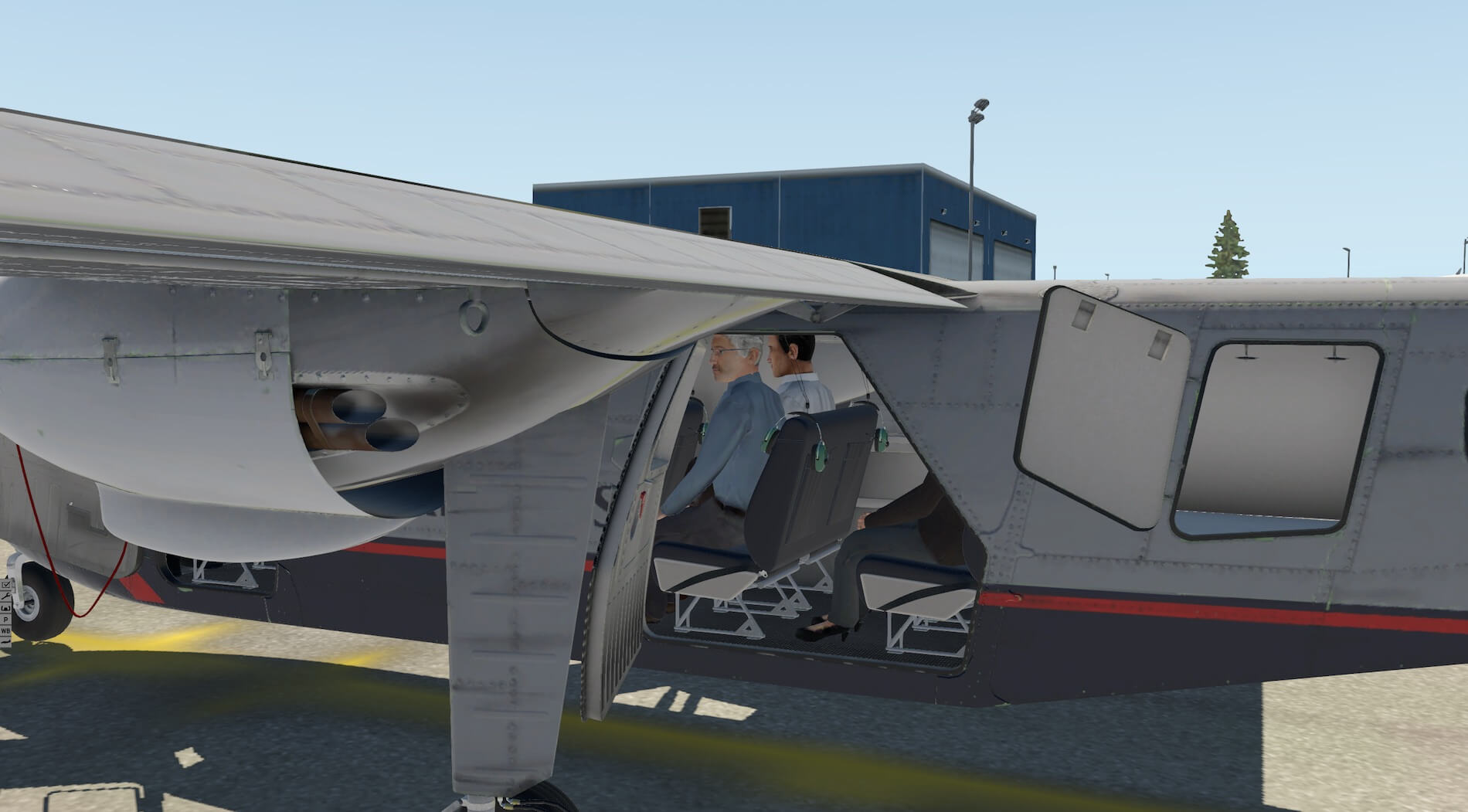





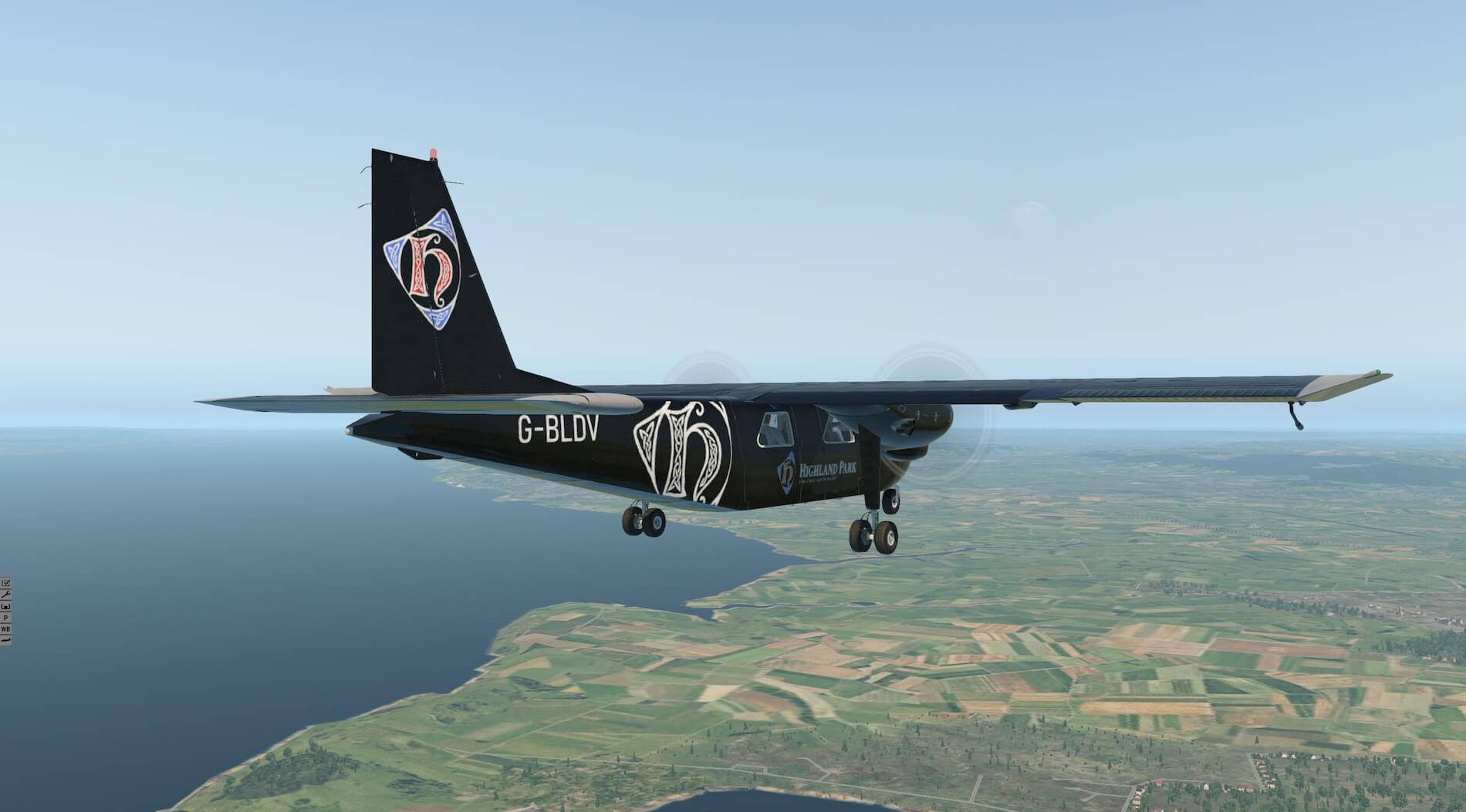



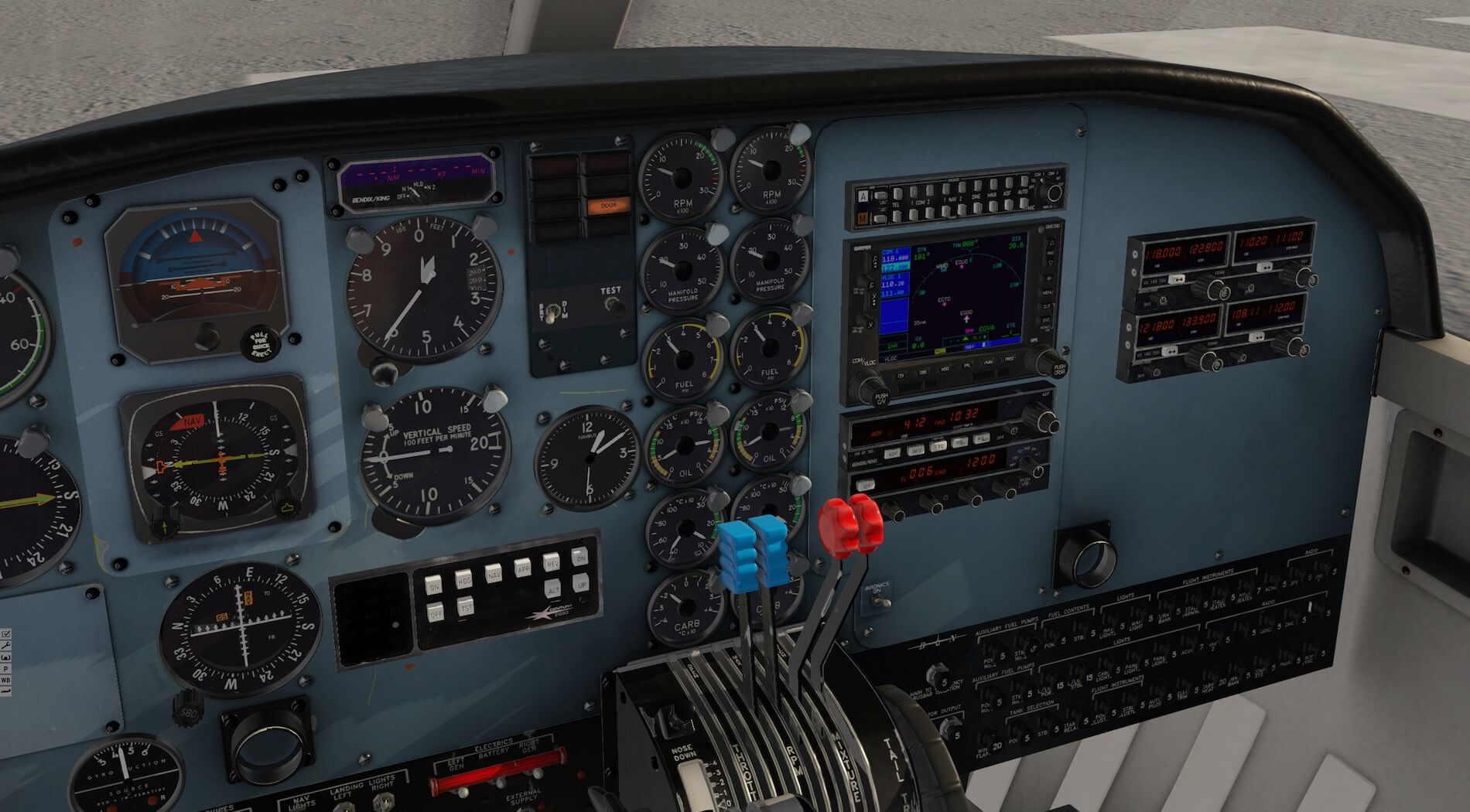
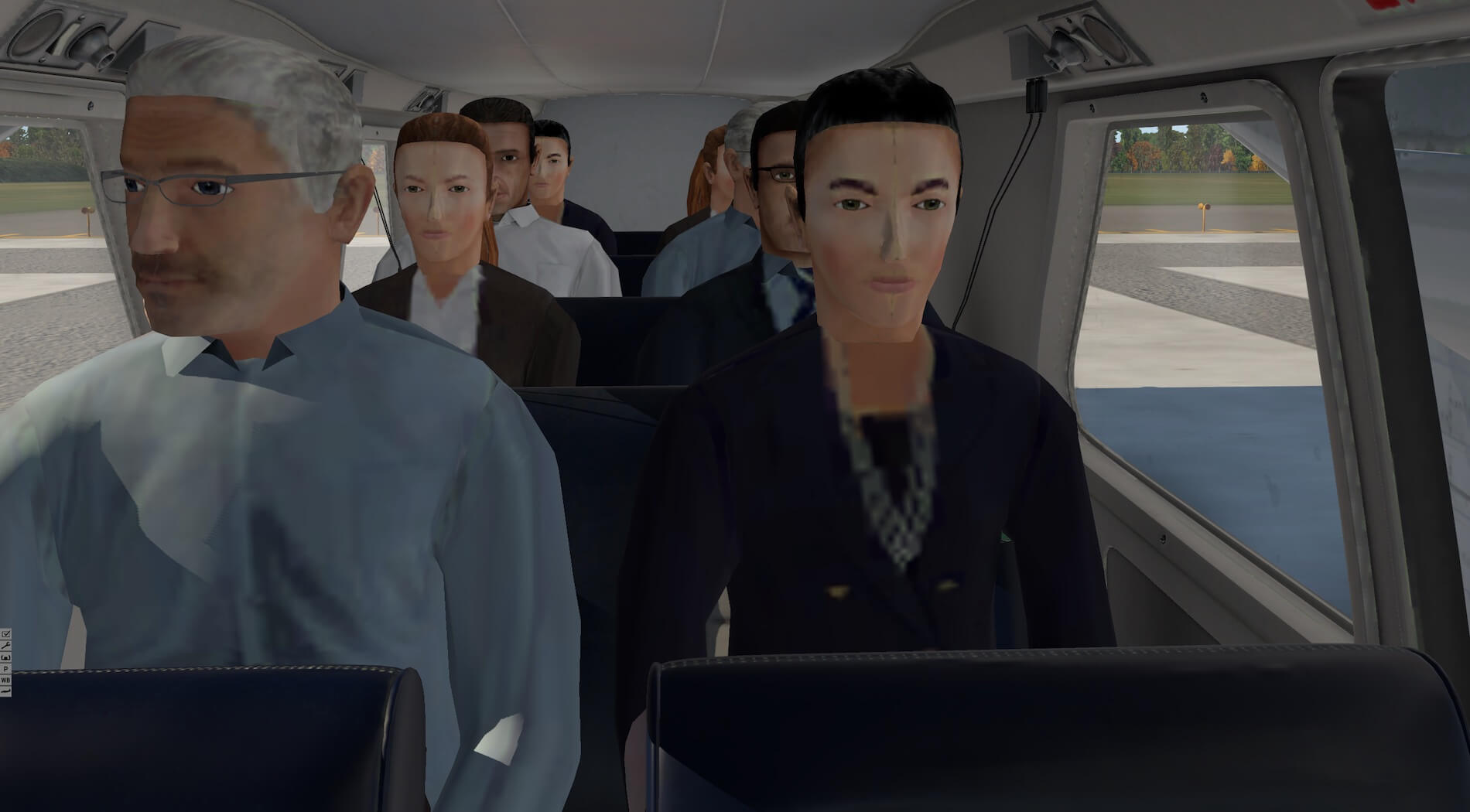











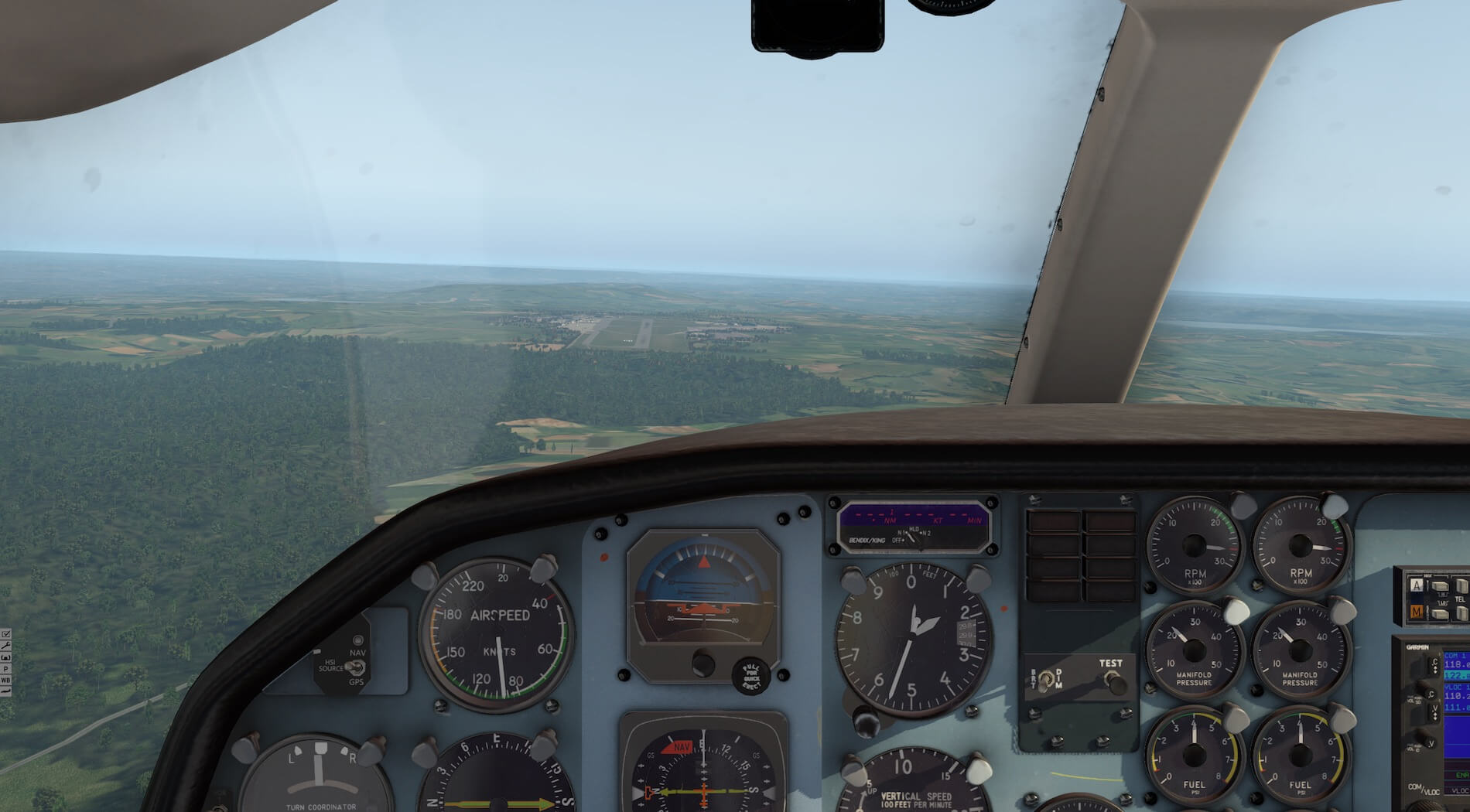
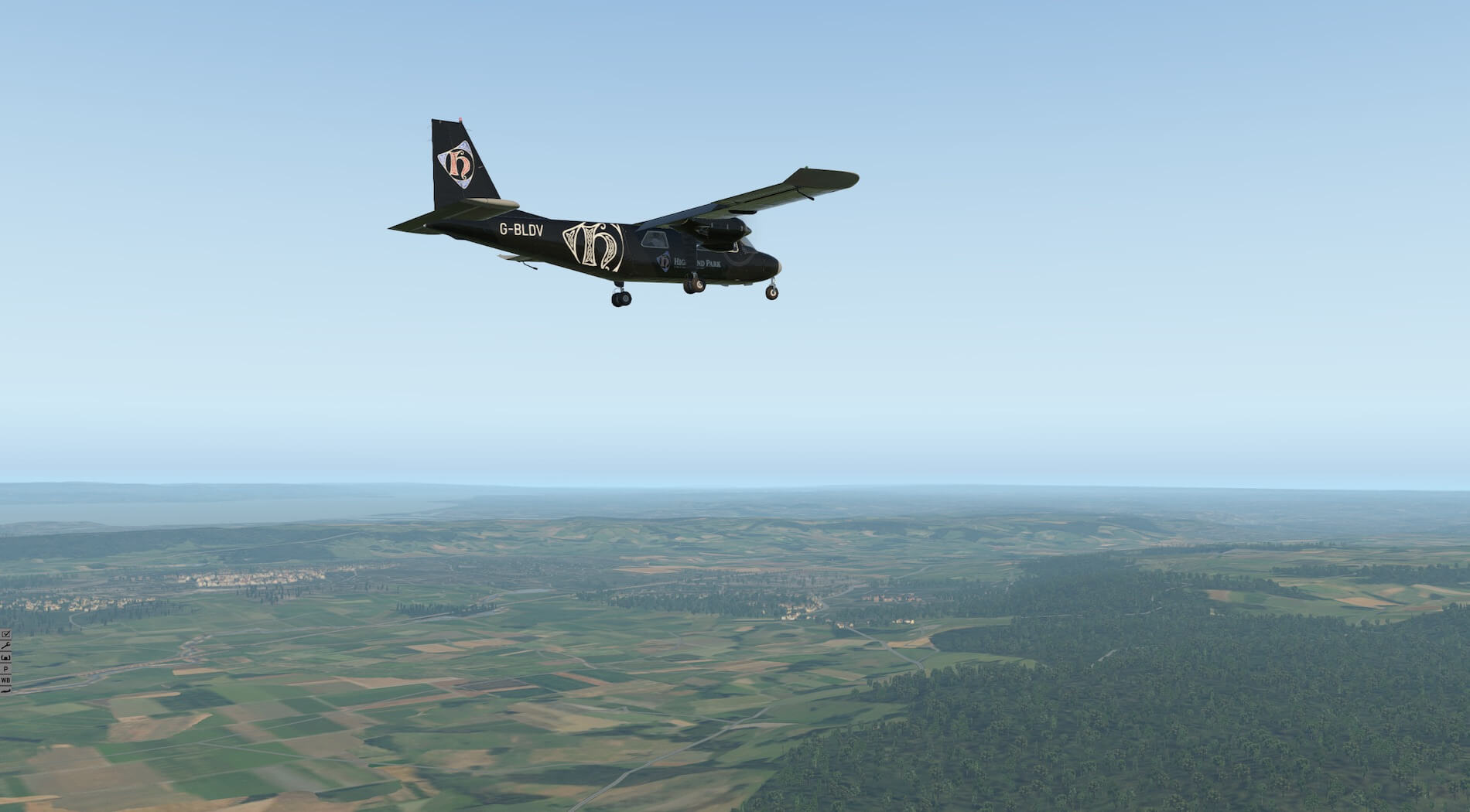
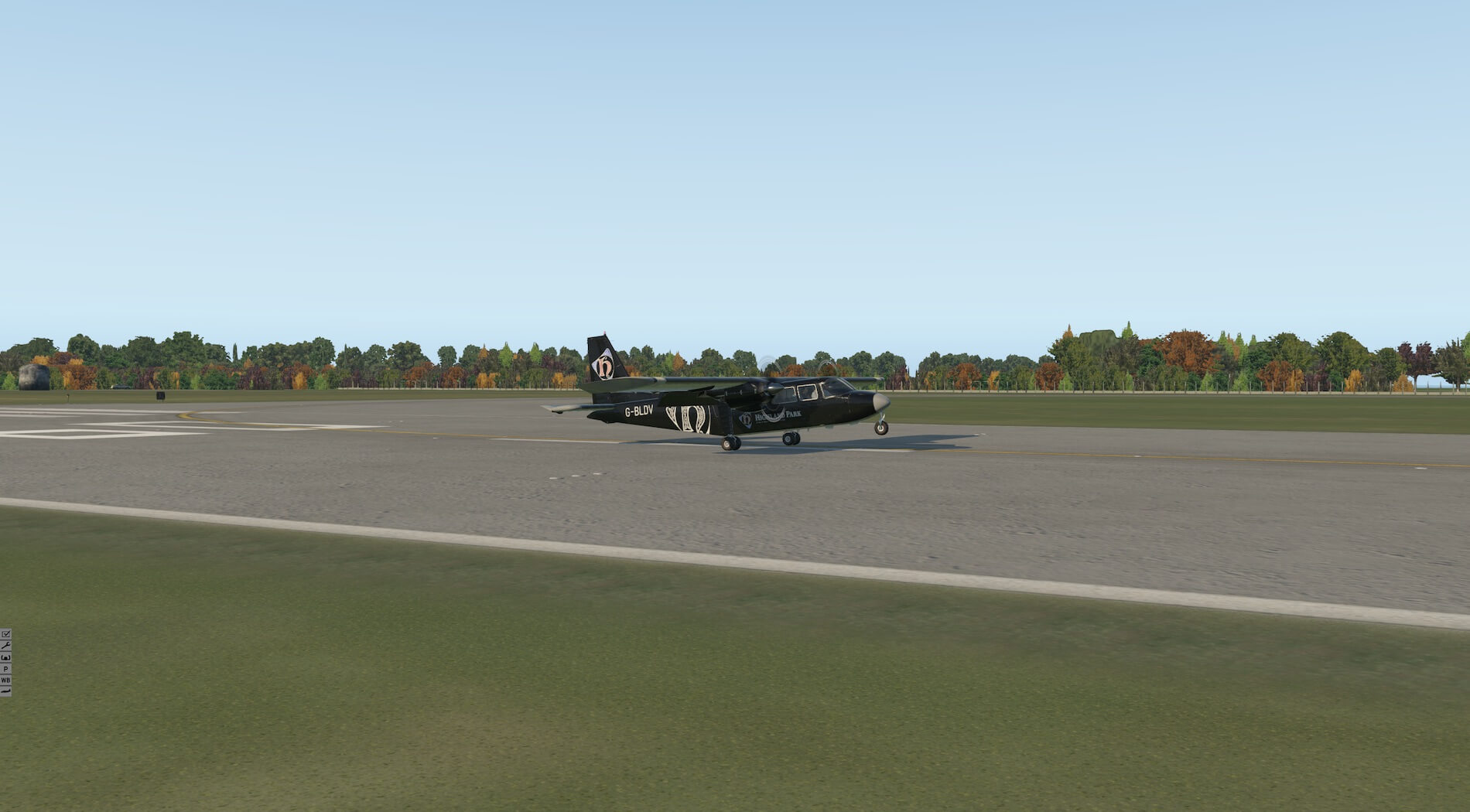








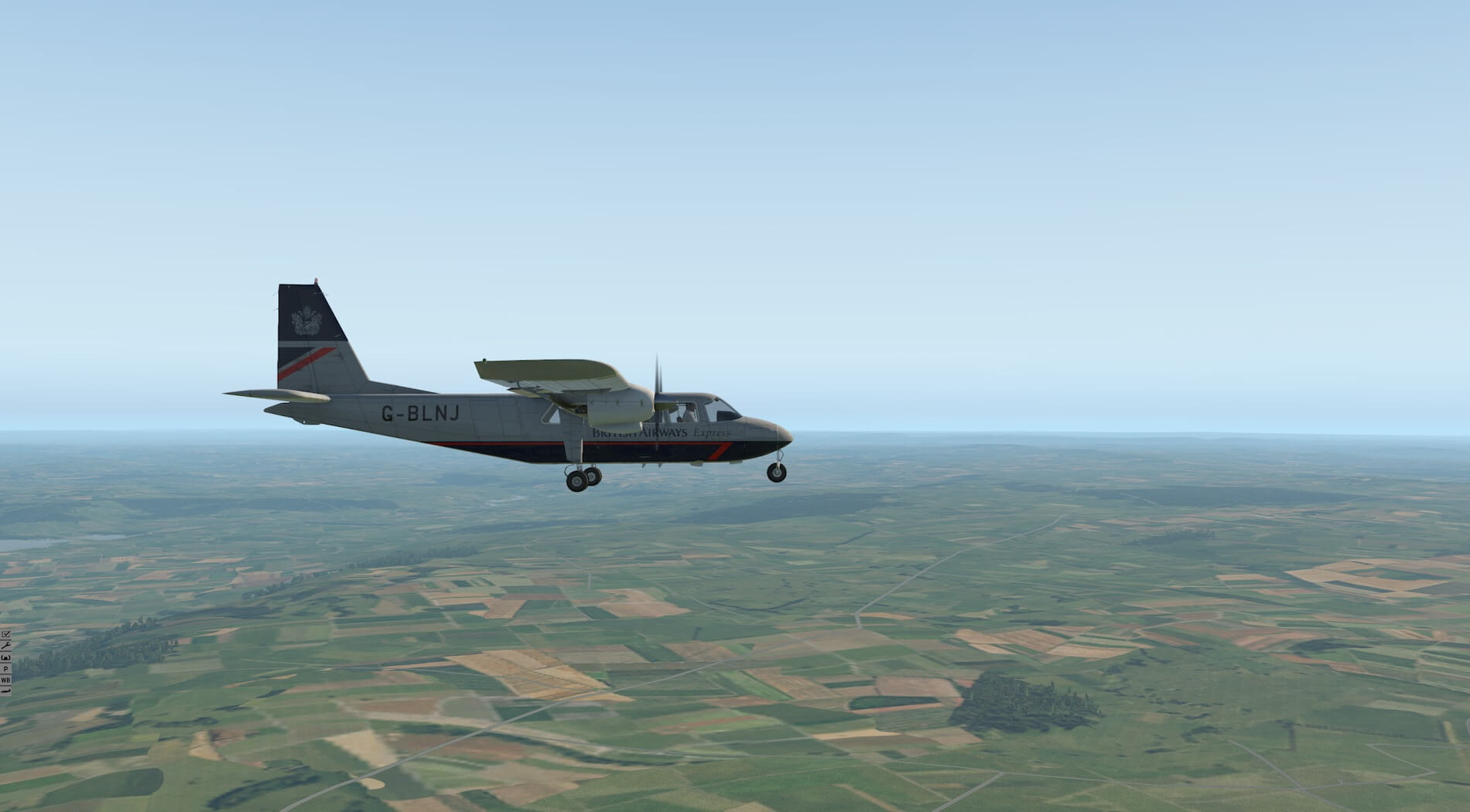



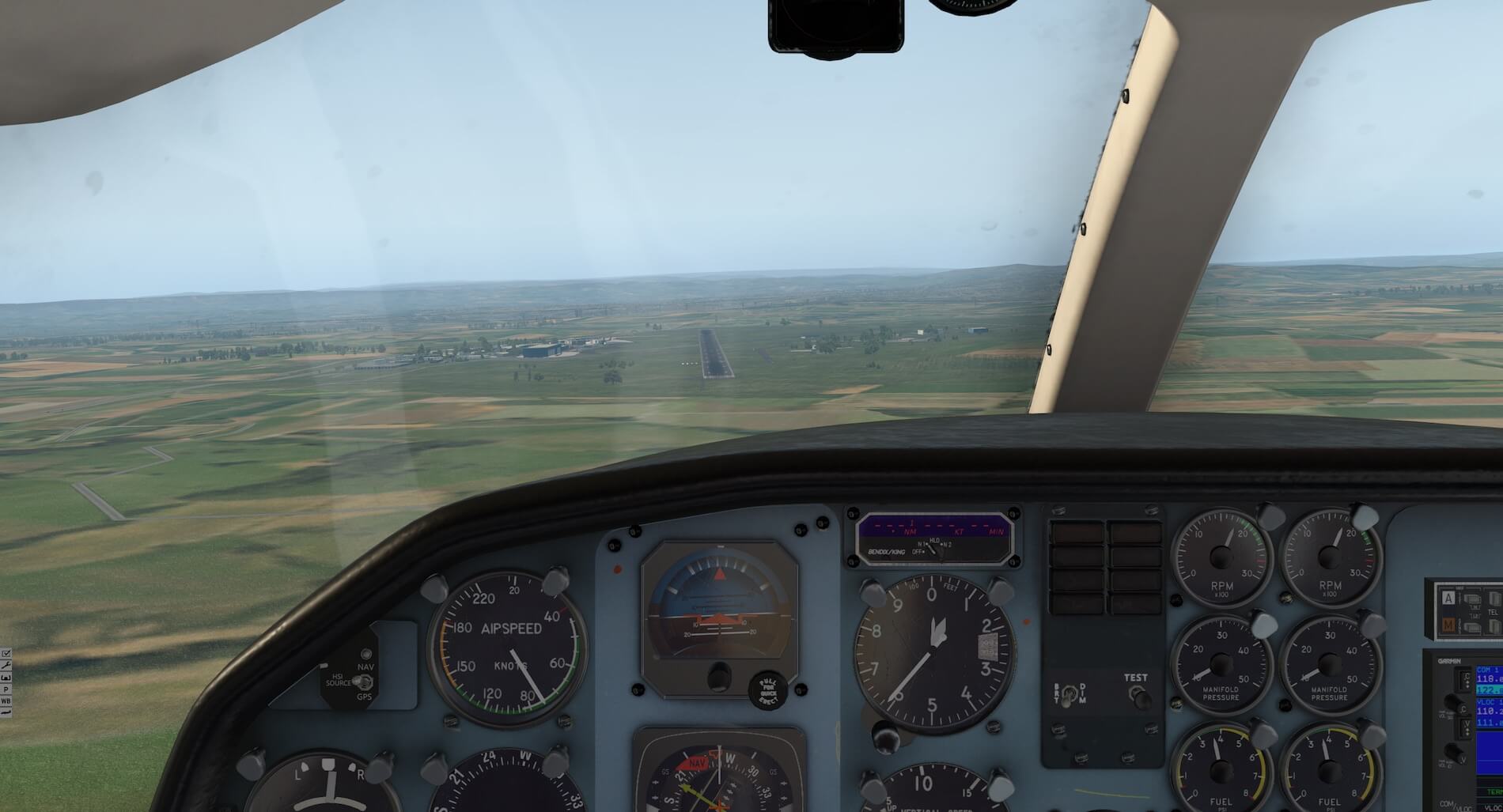


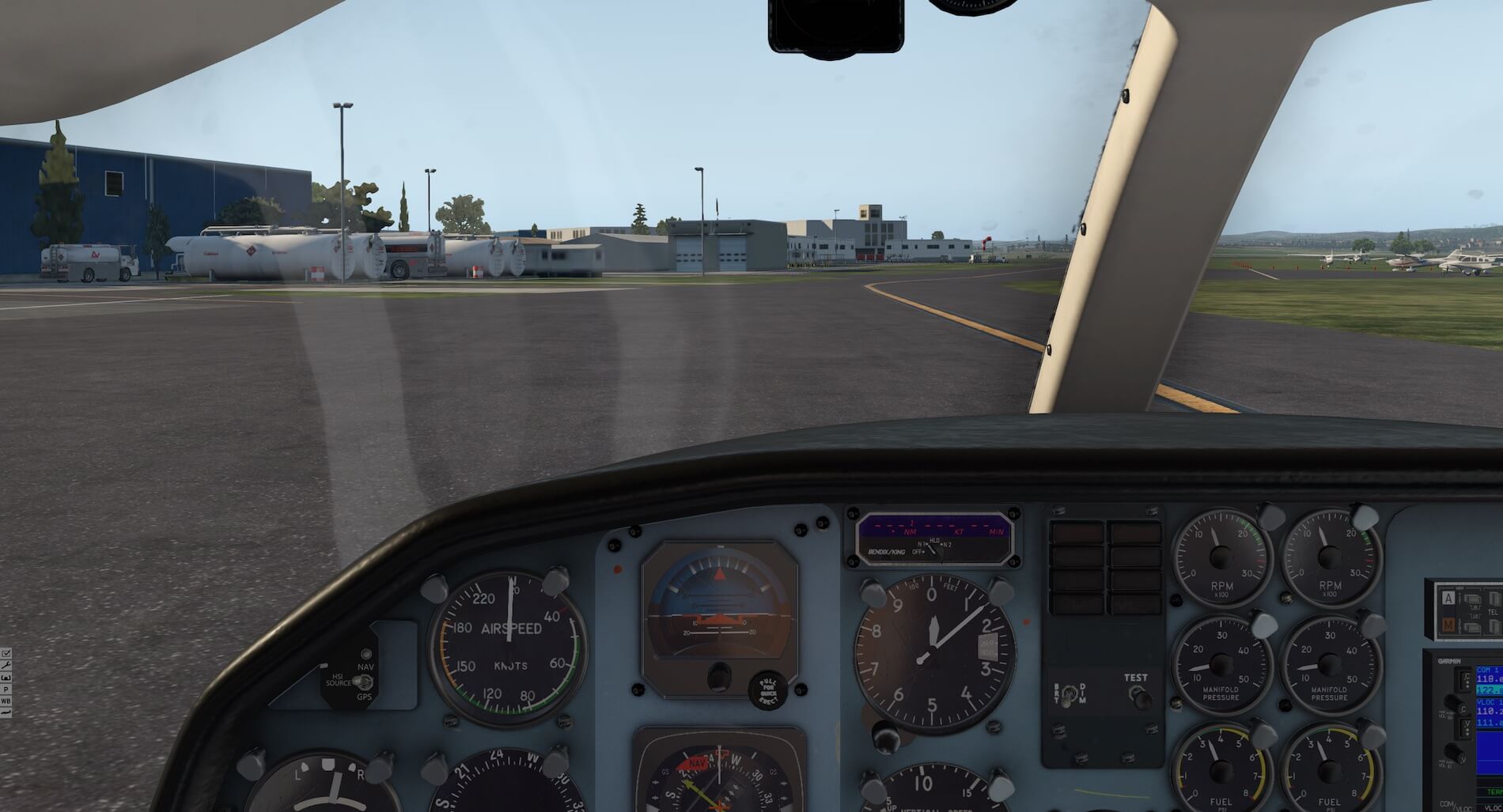












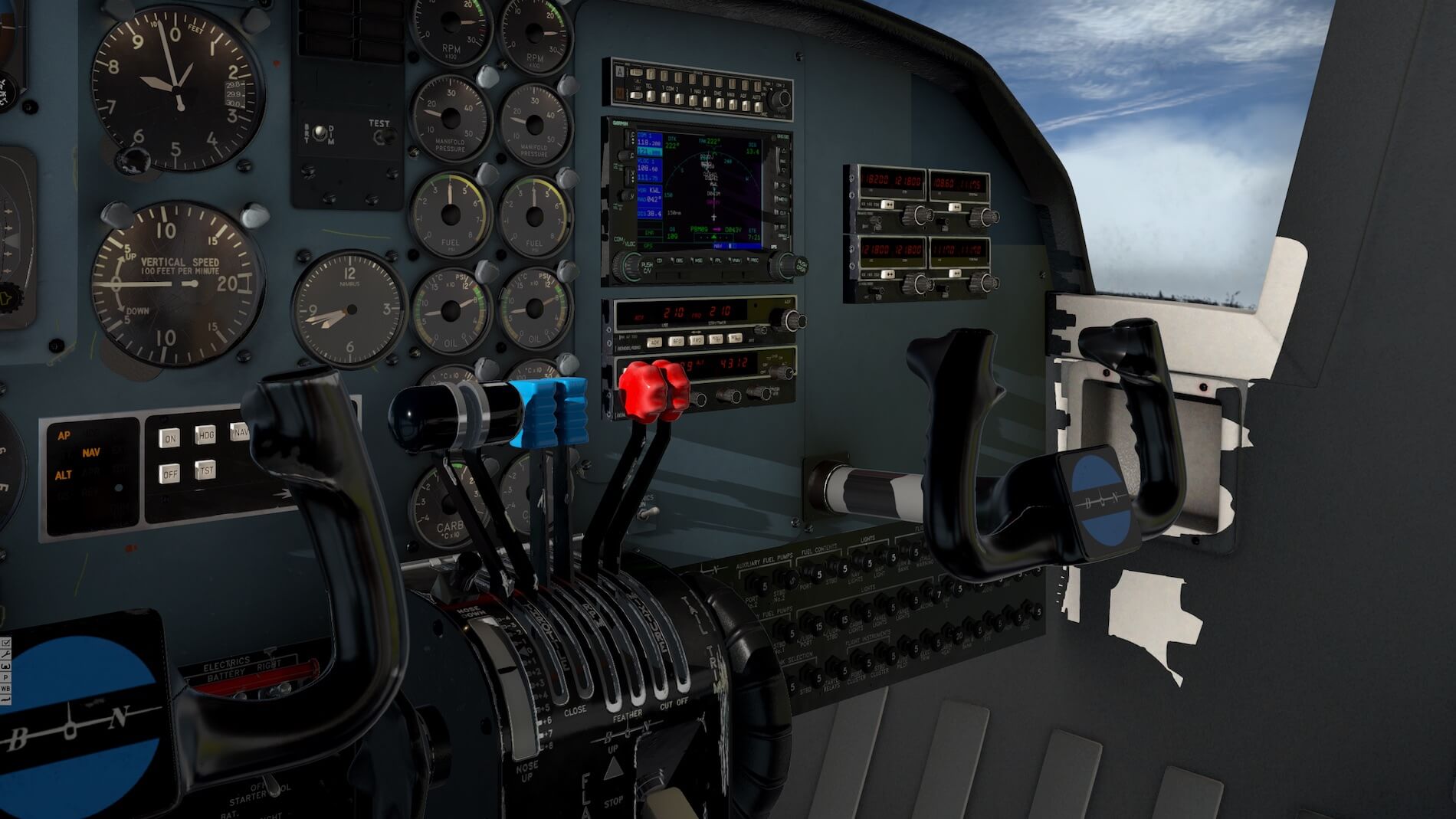


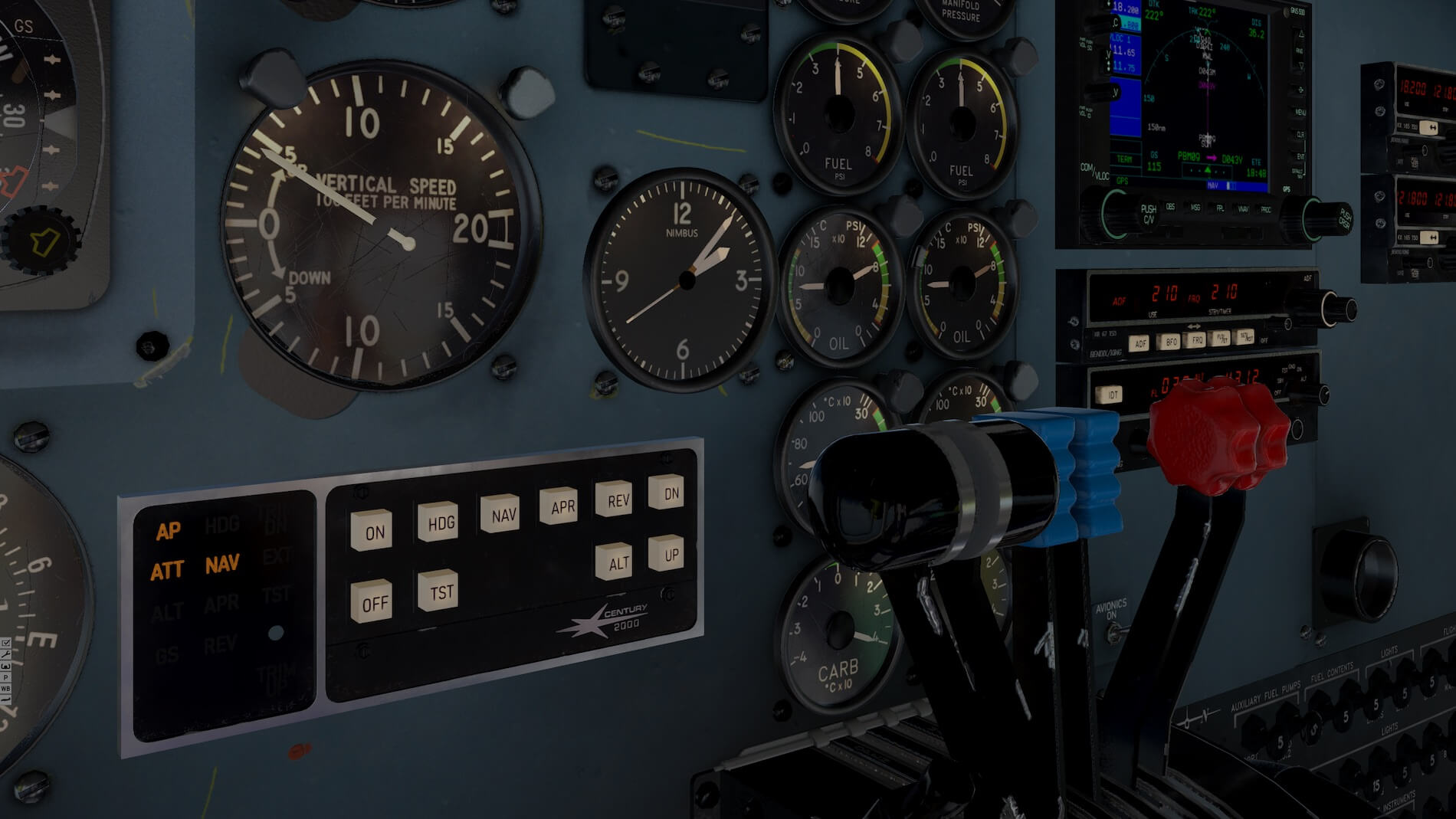

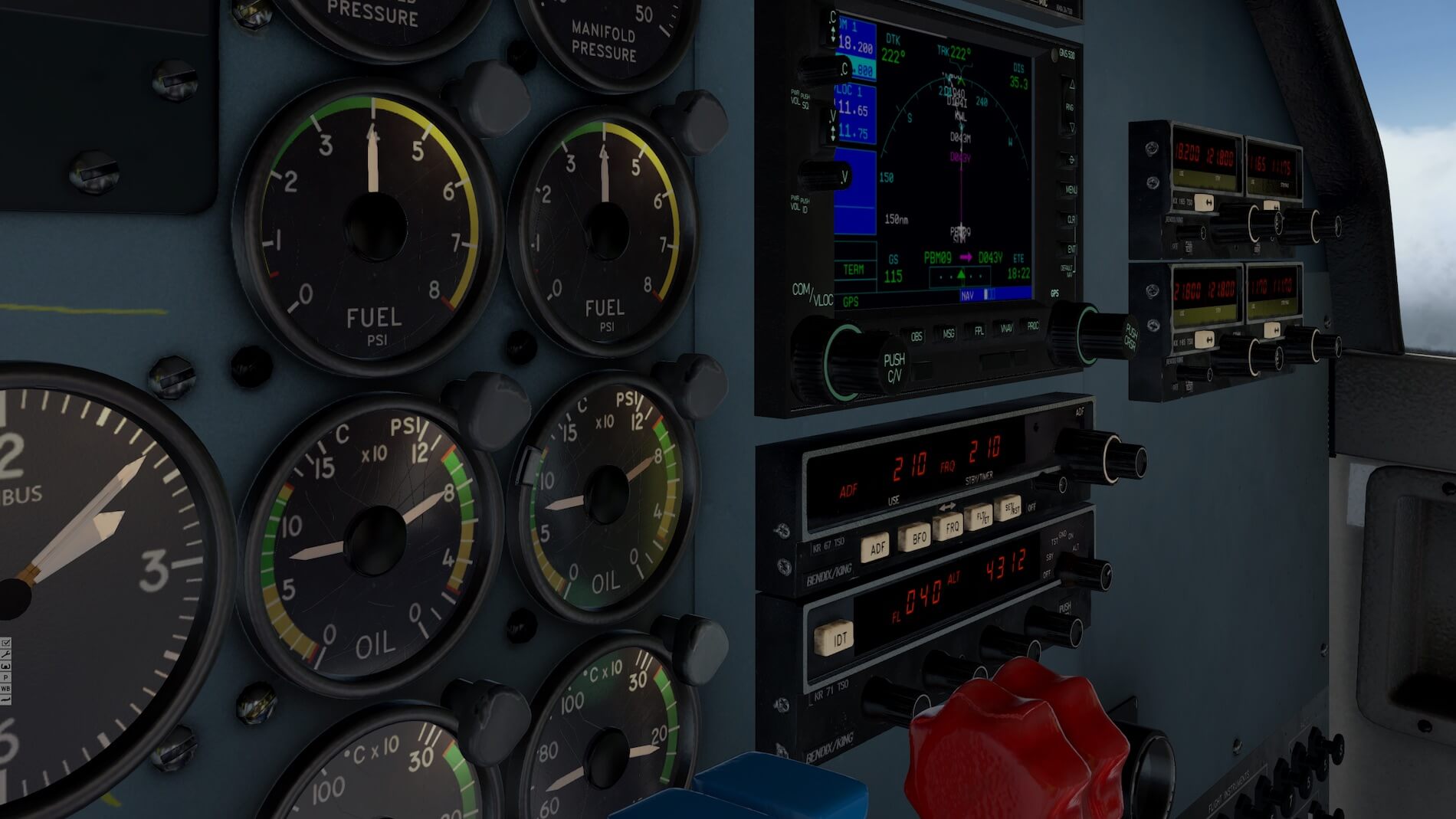


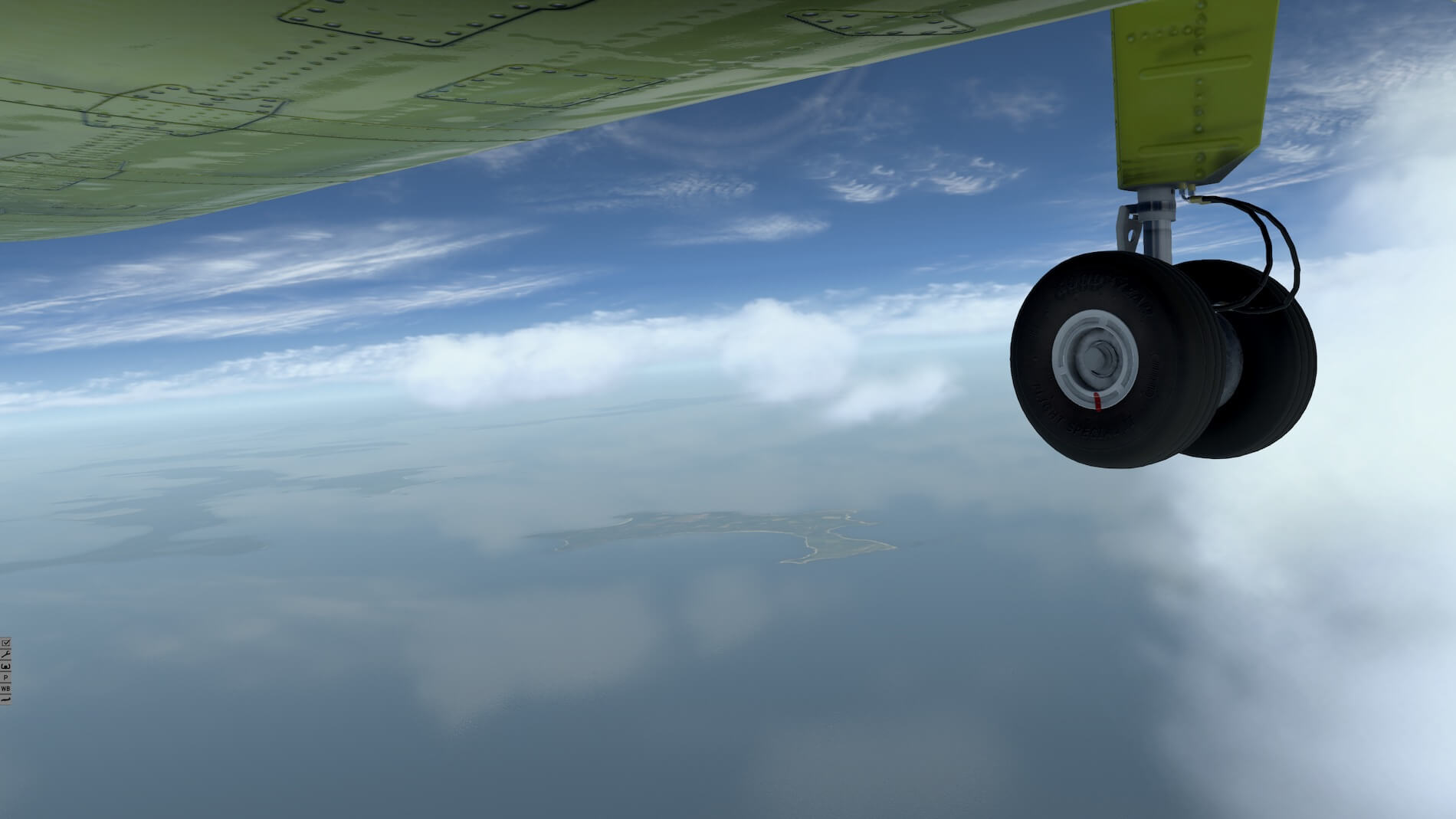












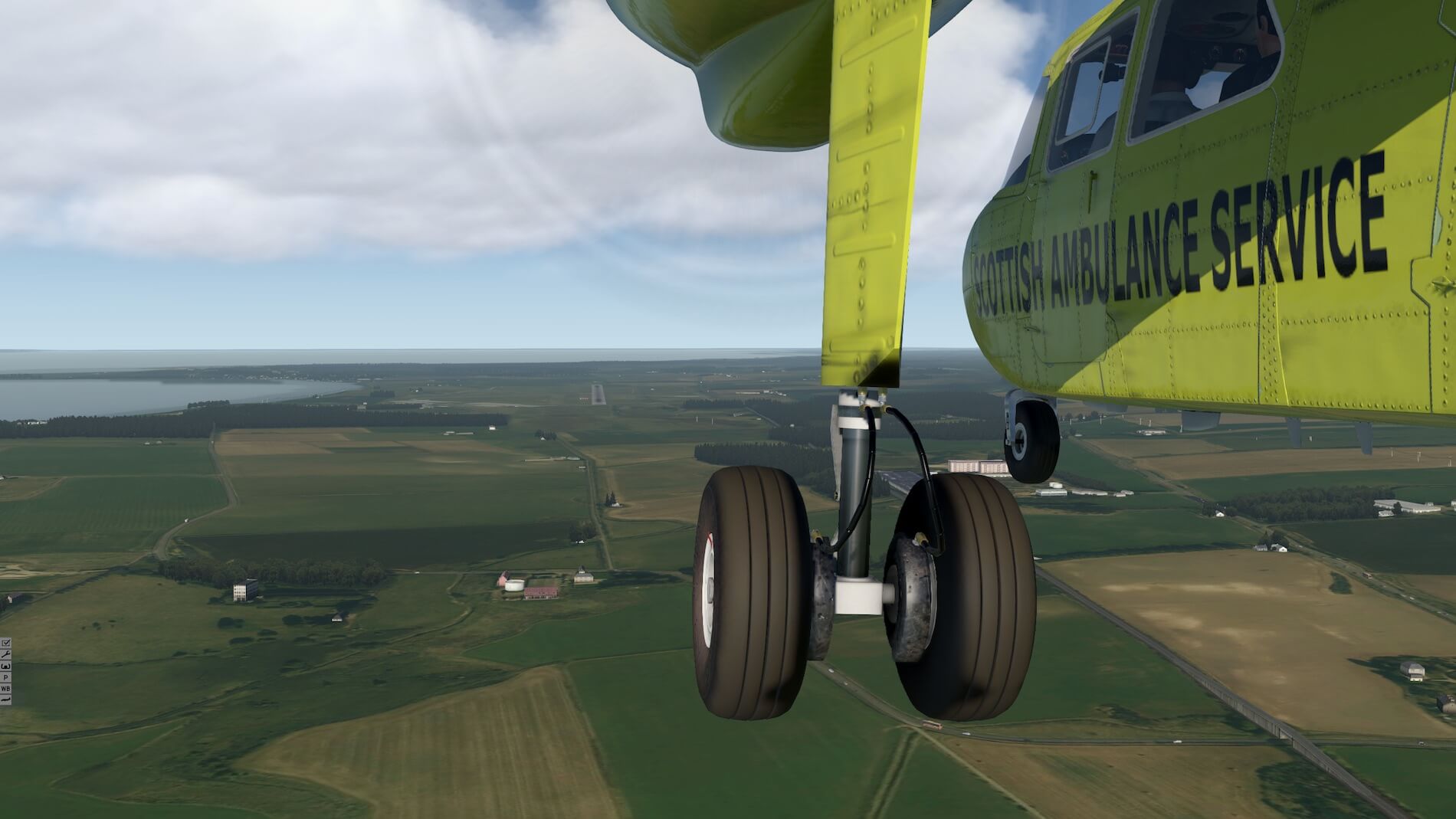

Dankjewel Angelique voor je hogelijk gewaardeerde uitgebreide reviews!
Hopelijk laat covid je niet afschrikken om ons nog meer degelijk werk te laten zien 🙂
With pleasure Ludo.